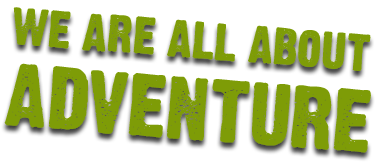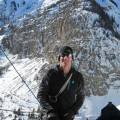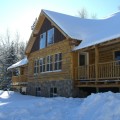The Four Types of Climbing Cleaners
If I go to hell, I will spend eternity cleaning. Already I can picture it, a smiling devil waiting to greet me as I step through the black iron gates, holding a broom and dustpan in place of a pitchfork. He will set me to mopping, vacuuming, washing dishes, “straightening up.” All words that make me want run away as fast as possible, yet all as inescapable as my harrowing fate.
Why do I hate cleaning so much, you ask? Well, cleaning up after a big event (or even a small one, like dinner) is a bit like coming home from a vacation. The best part is already long gone, all you have left now are souvenirs (dirty dishes) and memories. Like a nightclub on a Sunday morning, or a concert hall after a grand performance, it can feel kind of empty. Sad, even. The only evidence that anything of significance happened a few hours ago is the trash, just waiting to be taken away.
Then there’s the type of cleaning done before the event. That frantic, hyper-perfectionist, housewife-hosting-a-dinner-party type of cleaning. Every surface is shined, every floor vacuumed, every blemish covered up or repaired. Often it is accompanied by a rising sense of anticipation, and perhaps a twinge of dread. Will this scratch be noticed? Is everything laid out in the optimal way? It’s enough to drive a man mad.
Thus we climb. To escape the monotonous duties of the everyday. To hide from responsibility while we try, foolishly, to get up a rock that could easily be summited from the other side.
But there’s no hiding from cleaning.
Cleaning follows you even to the crag, hovering like the ghost of a minimum wage job, haunting the very routes you climb. And it looks remarkably similar to cleaning in real life. From pre-climb to post-climb to everything in between, there are a myriad of tasks and taskers involved in the cleaning process which closely resemble those of real life.
First off, there’s the normal type. You know, the kind actually called “cleaning:” removing the protection when the climb is done. We’ll call the climbers who do this janitors, the most basic of caretakers. Once again, the best part has already passed, leaving behind a trail of gear to be moved somewhere else. When you are cleaning a route, it means that you have either completed it, in which case the cleaning brings you down from a euphoric high of satisfaction, or you have given up, in which case the cleaning may add to the frustration, anger, and dented pride that come with failure. Either way, it’s kind of a downer, unless you have a climbing custodian.
The climbing custodian is that partner who will climb your route and generously clean it as he or she goes up, thus turning cleaning into an integral part of the climb itself. People like this are a true blessing, possibly even saving you from several tedious and ultimately futile attempts at using a stick clip to remove quickdraws (seriously, whoever invents an easy to use stick clip that doesn’t leave you on pins and needles with each attempt to remove a draw will be a millionaire).
One step up from the Custodian is the Groundskeeper. As a general rule, every climbing Groundskeeper has at least some level of undiagnosed obsessive compulsive disorder. This type of cleaner is often found with a surprisingly diverse arsenal of brushes, ranging in size from toothpick to hairbrush. While it’s easy to make fun of their ceaseless scrubbing of any and all chalk marks, the truth is that they perform a valuable service for the rest of the community. Much like a traditional groundskeeper, who will often prepare a baseball or football field for prime time, the climbing Groundskeeper prepares a route for send time. Every hold is carefully inspected and optimized for maximum friction. Eventually, the brushing becomes little more than habit, ending up completely unnecessary for the aesthetic or difficulty of the overall climb. But does that stop a groundskeeper? Never. They scrub until they can scrub no more. Because when it’s sending that’s on the line, “good enough” is never good enough.
But there is one type of cleaner who trumps them all. Finishing up long before anyone else ever notices, they are the Originals, the first to deal with any route or boulder problem. These are the ones who take a blank wall of rock and turn it into something more, something worth climbing. They pull off overgrowth, tear down loose rock, scrape off dirt, and trundle blocks of death. When you look in a guidebook and see the names of the people who put up a route or problem, you don’t always realize the work that went into its creation. Often, it involves more cleaning than anything else. Originals are a combination of construction workers, gardeners and explorers, venturing out to discover unknown paths through the world of the vertical, then cultivating that path and paving the way for others behind them. To these brave souls we owe the greatest debt as climbers, for without them, there would be no crag.
The truth is, that ever since I took up the sport of climbing, witnessing the generous acts of Janitors, Custodians, Groundskeepers, or Originals have provided me with a better appreciation for the act of cleaning, allowing me to see it as a necessary evil. But until Satan comes calling with mop in tow, I will continue to milk out every opportunity I have to embrace the disarray.








